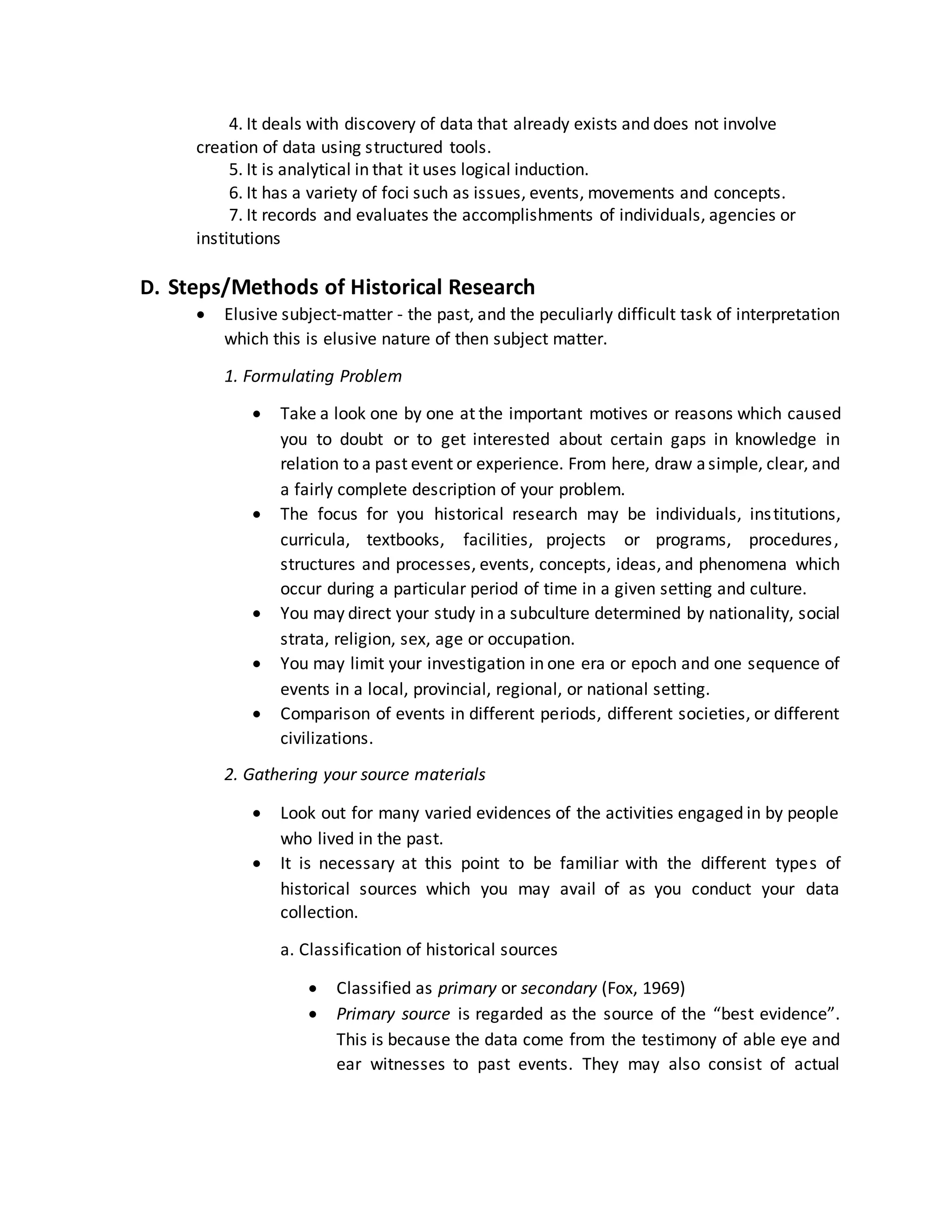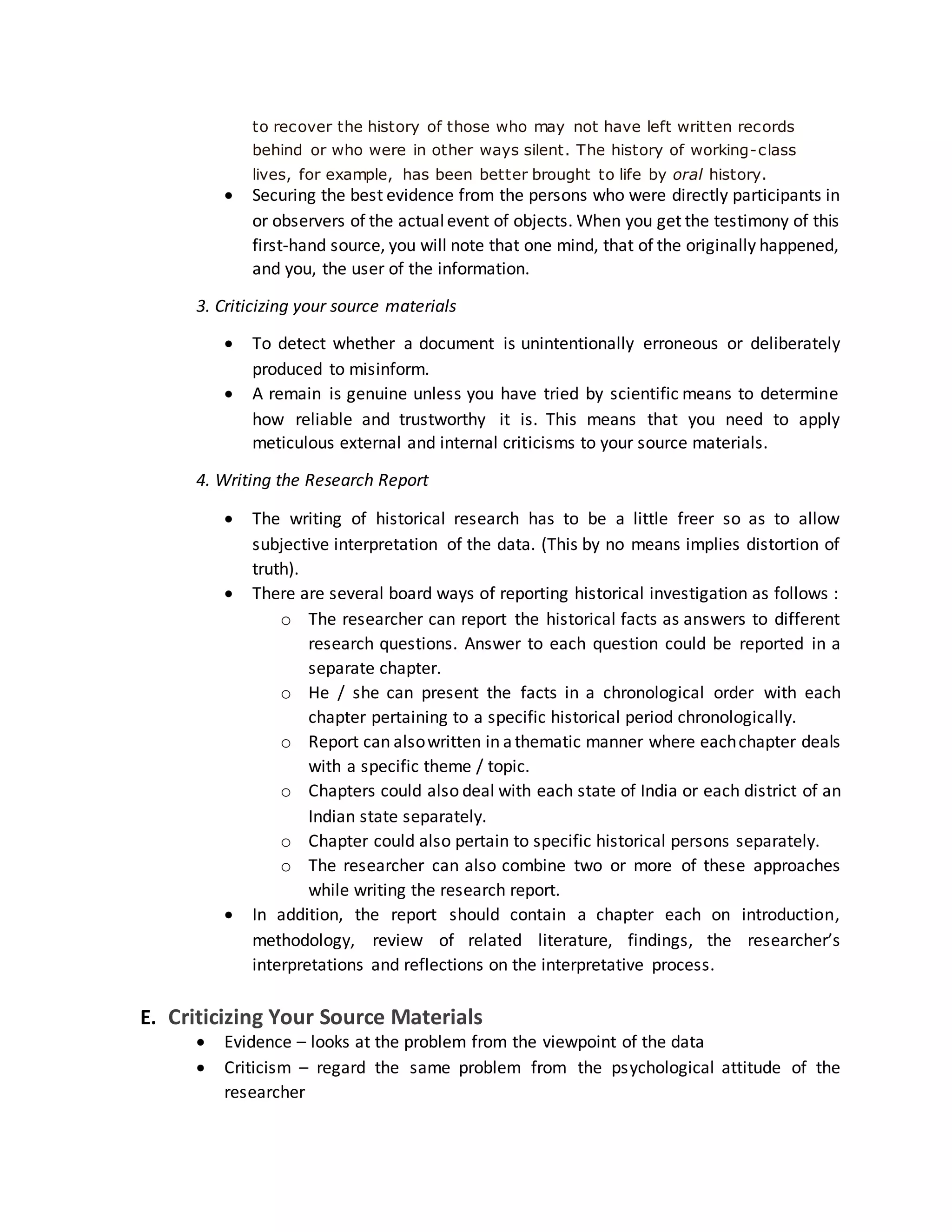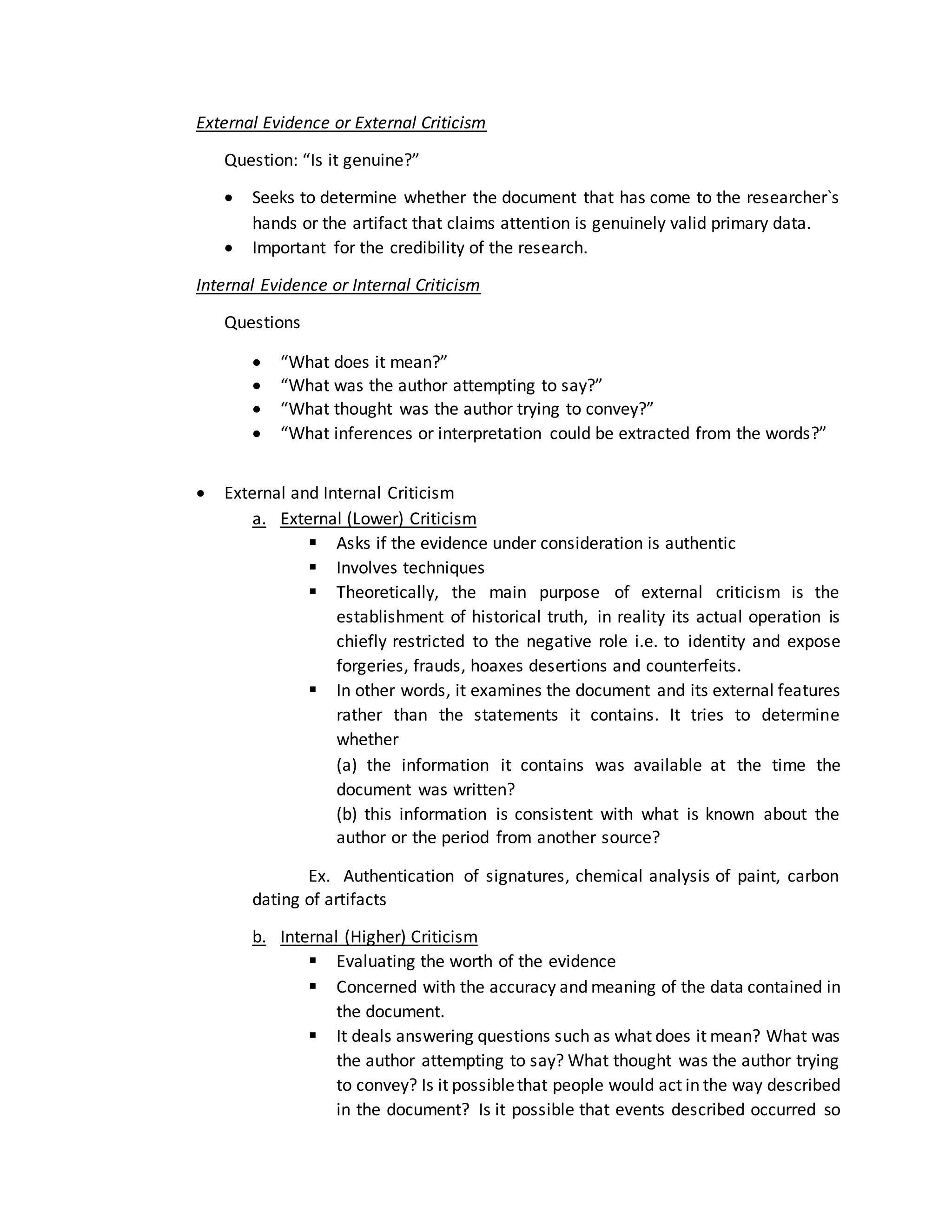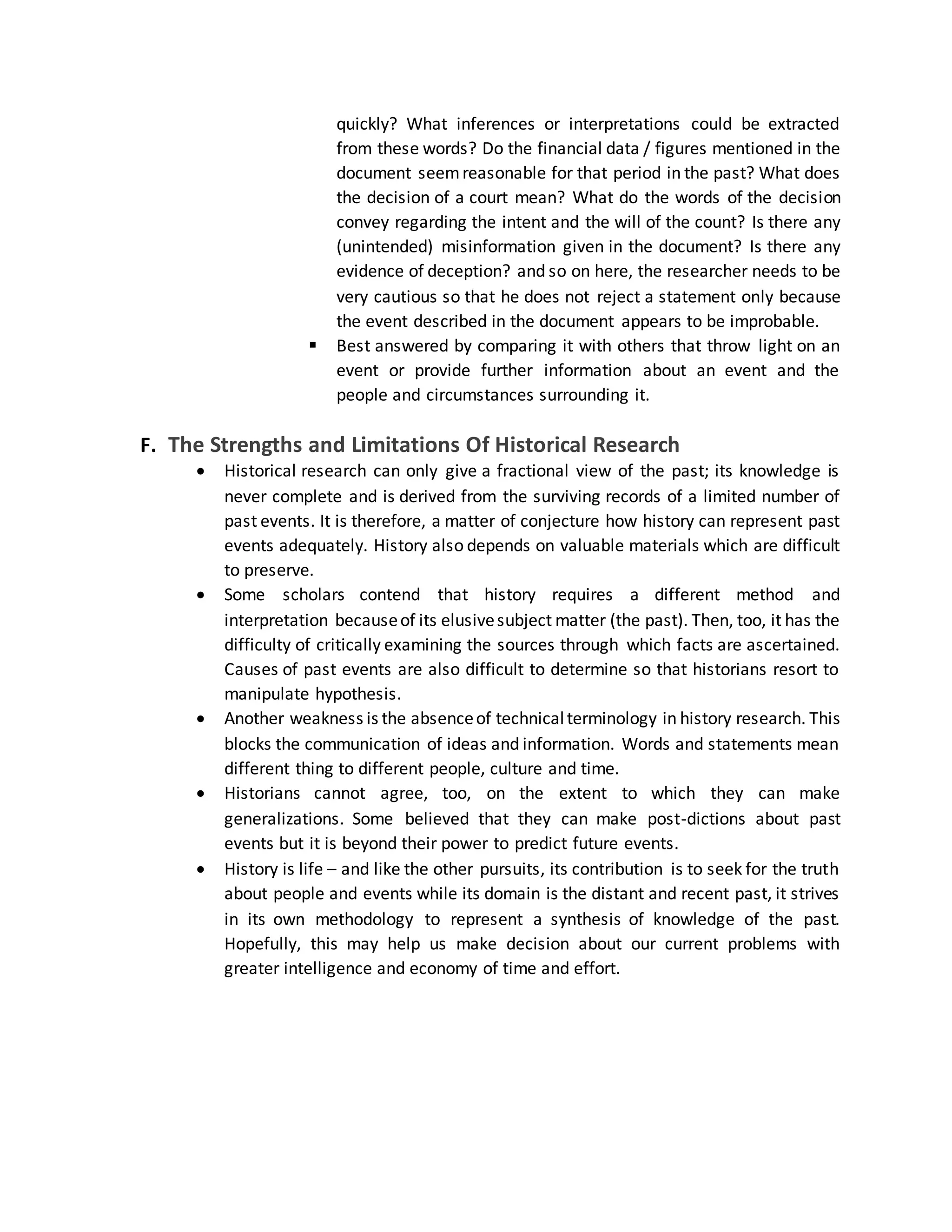The document is a submission on historical research aimed at summarizing the discipline and methodologies of studying the past, emphasizing the importance of critical analysis of historical sources. It outlines various areas of historical study, the value and challenges of historical research, and the steps involved in conducting historical inquiries, including source collection and evaluation. Additionally, it presents a case study of Australian women during the Great War to illustrate the application of historical methodologies in understanding past events.

![A. Definition and Areas of History
What is History?
“History is a narration of the events which have happened among mankind,
including an account of the rise and fallof nations, as wellas of other great changes which
have affected the political and social condition of the human race.” John J.
"Faithfulness to the truth of history involves far more than a research, however
patient and scrupulous, into special facts. Such facts may be detailed with the
minutest exactness, and yet the narrative, taken as a whole, may be unmeaning
or untrue. The narrator must seek to imbue himself with the life and spirit of the
time. He must study events in their bearings near and remote; in the character,
habits, and manners of those who took part in them. He must himself be, as it
were, a sharer or a spectator of the action he describes." Francis Parkman
History (from Greek ἱστορία, historia, meaning "inquiry, knowledge acquired by
investigation")[2] is the study of the past, particularly how it relates to
humans.[3][4]It is an umbrella term that relates to past events as well as the
memory, discovery, collection, organization, presentation, and interpretation of
information about these events. Scholars who write about history are
called historians. Events occurring prior to written record are
considered prehistory.
Areas of History Studies
Working with their advisors, graduate students in History, particularly in the Ph.D.
program, are encouraged to develop innovative fields of study tailored to their
individual interests. Thematic, comparative, and methodological fields that cut
across conventional geographical and chronological boundaries are all possible.
Below are general descriptions of the various areas of geographical focus of our
faculty and their thematic interests and approaches.
1. African and Middle Eastern history
2. Asian history
3. European history
4. Latin American history
5. United States history
B. Views on the Value of Historical Research](https://image.slidesharecdn.com/historicalmethodwrittenreport-150626113144-lva1-app6892/75/Historical-method-written-report-2-2048.jpg)







